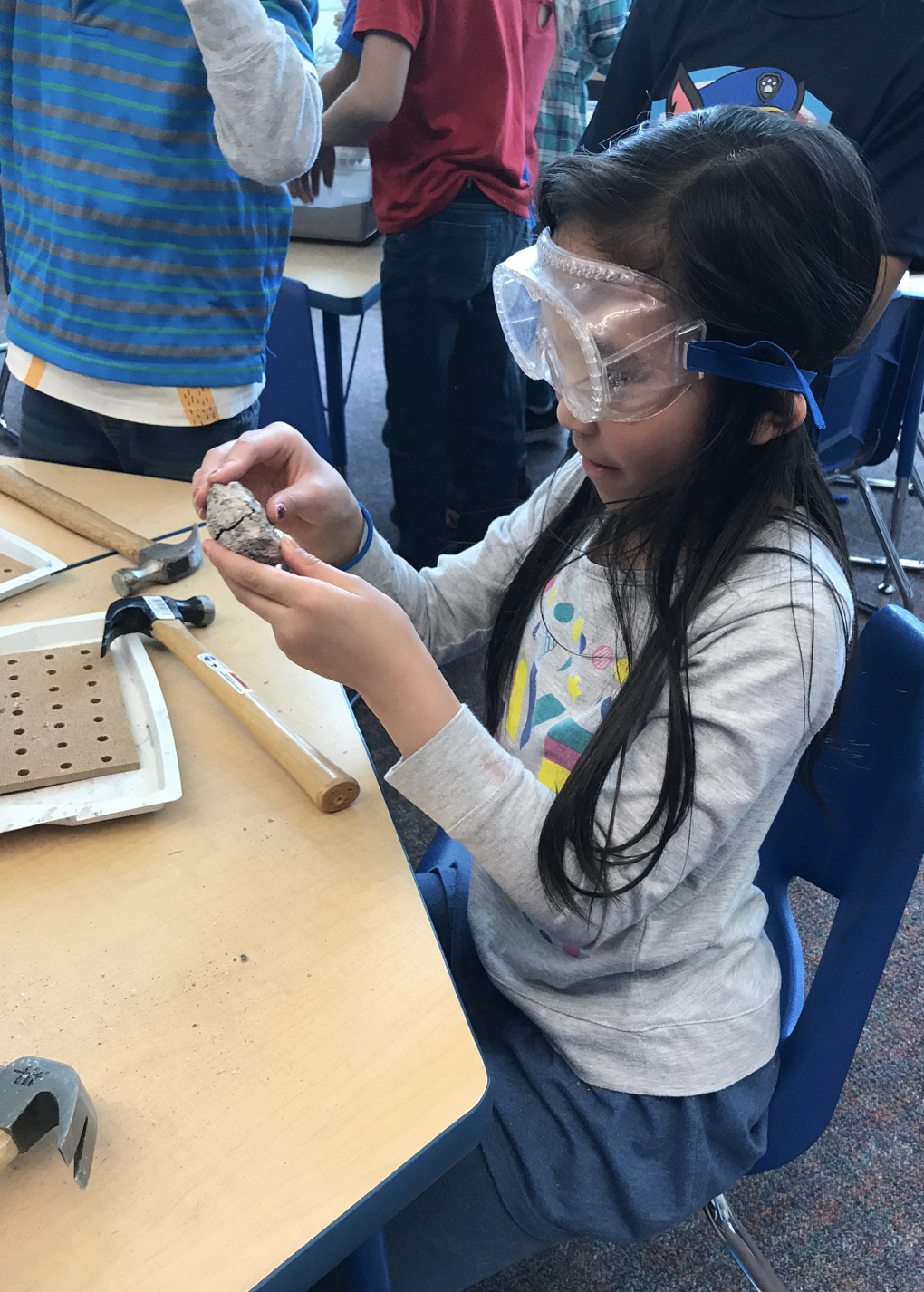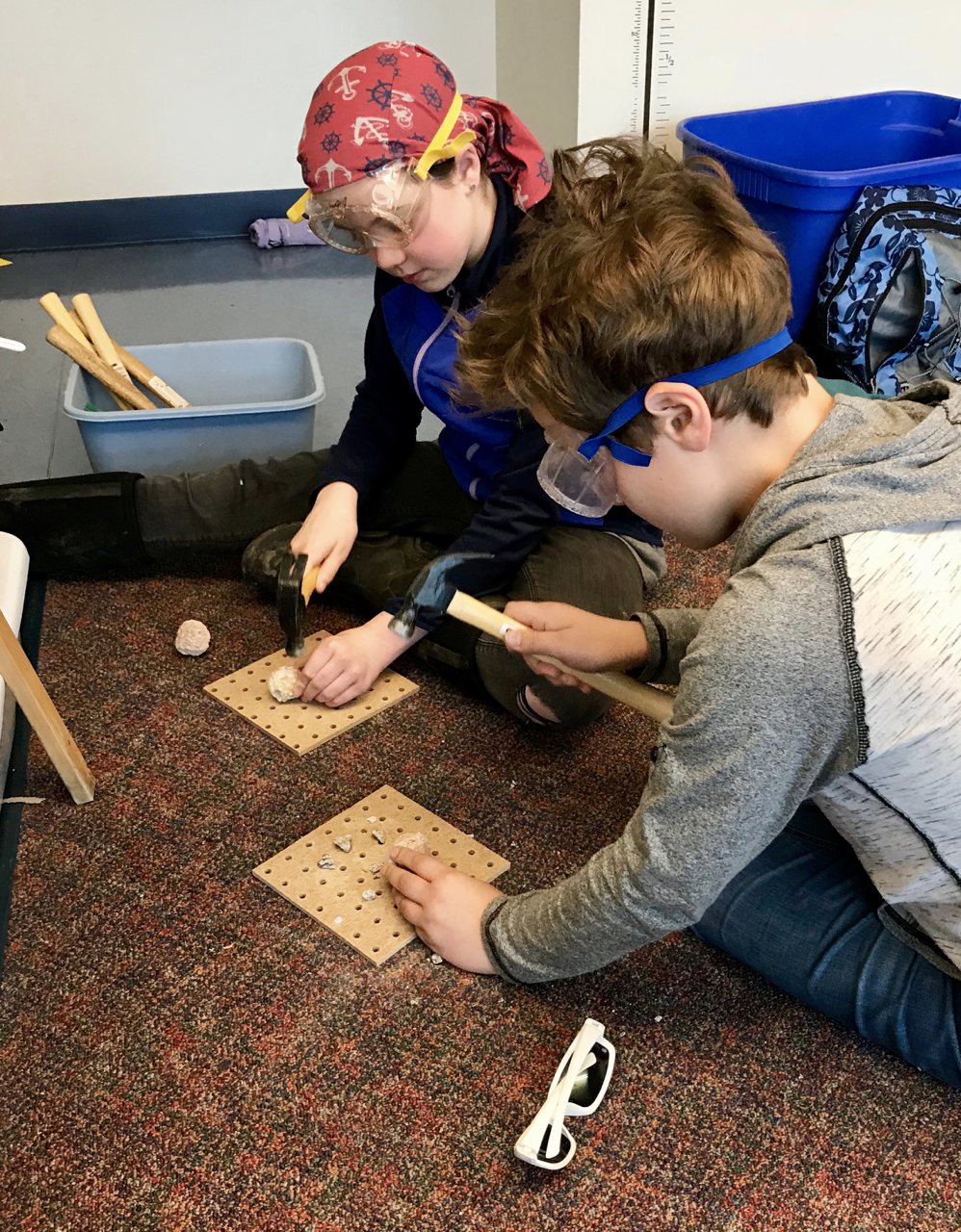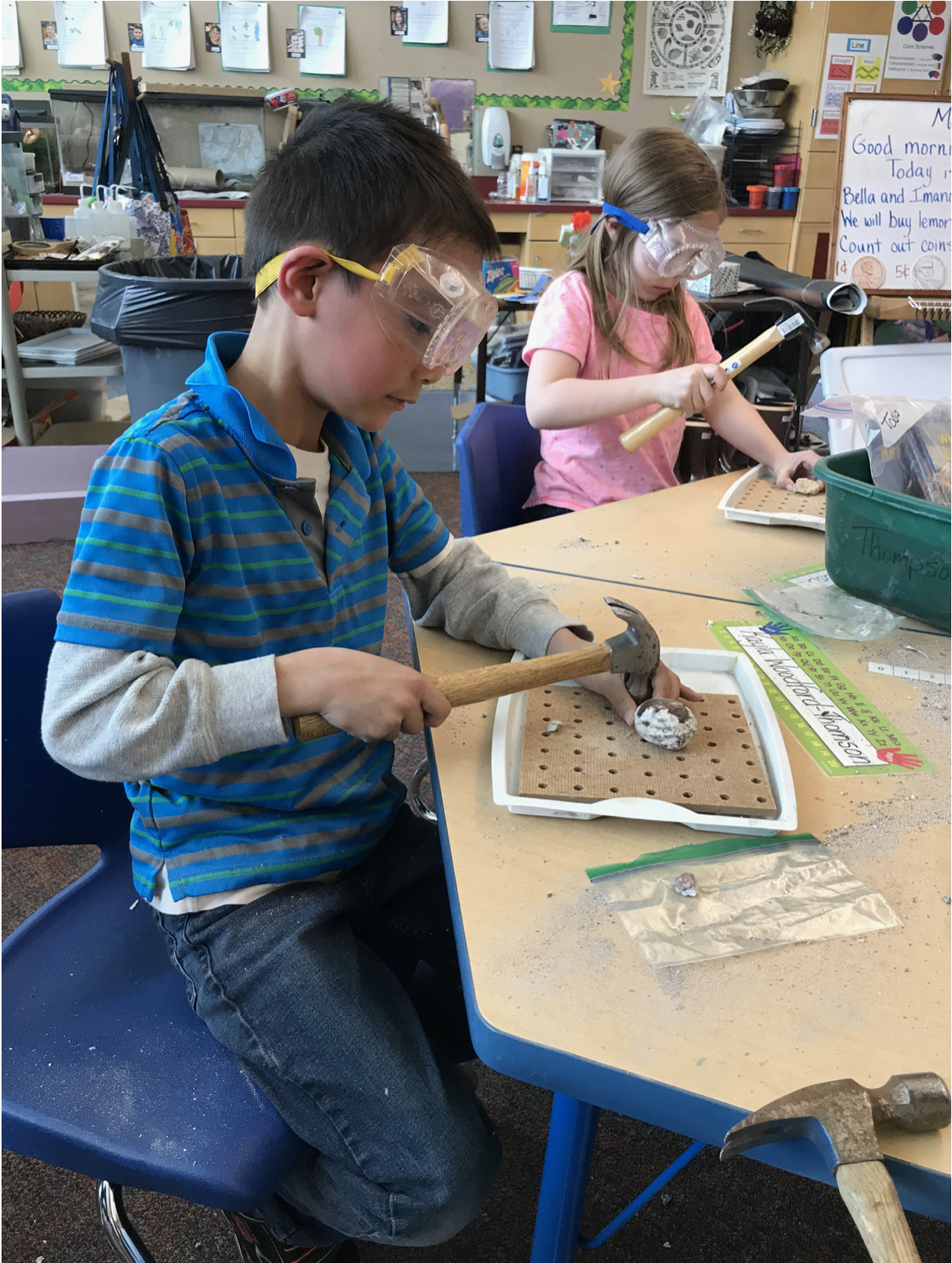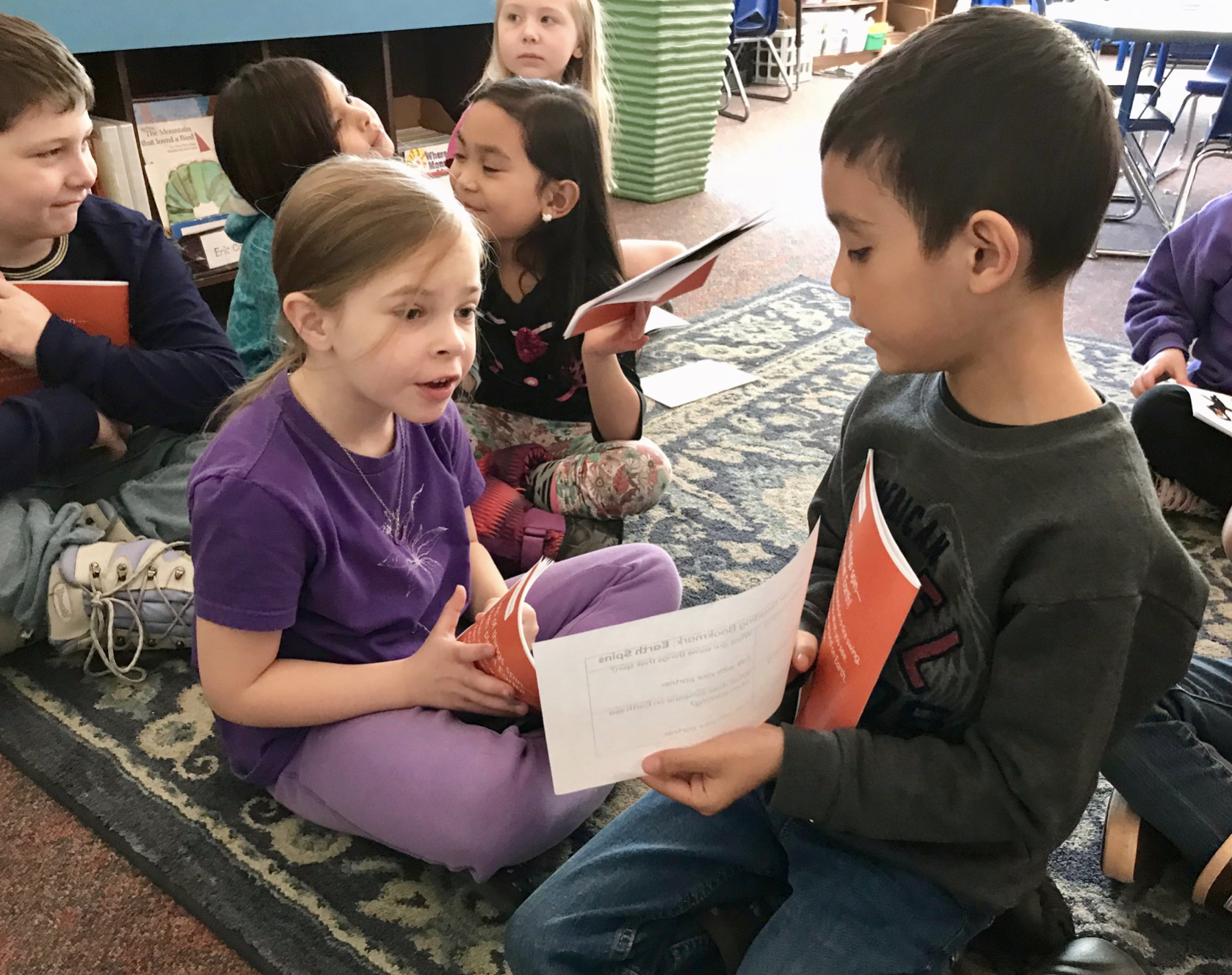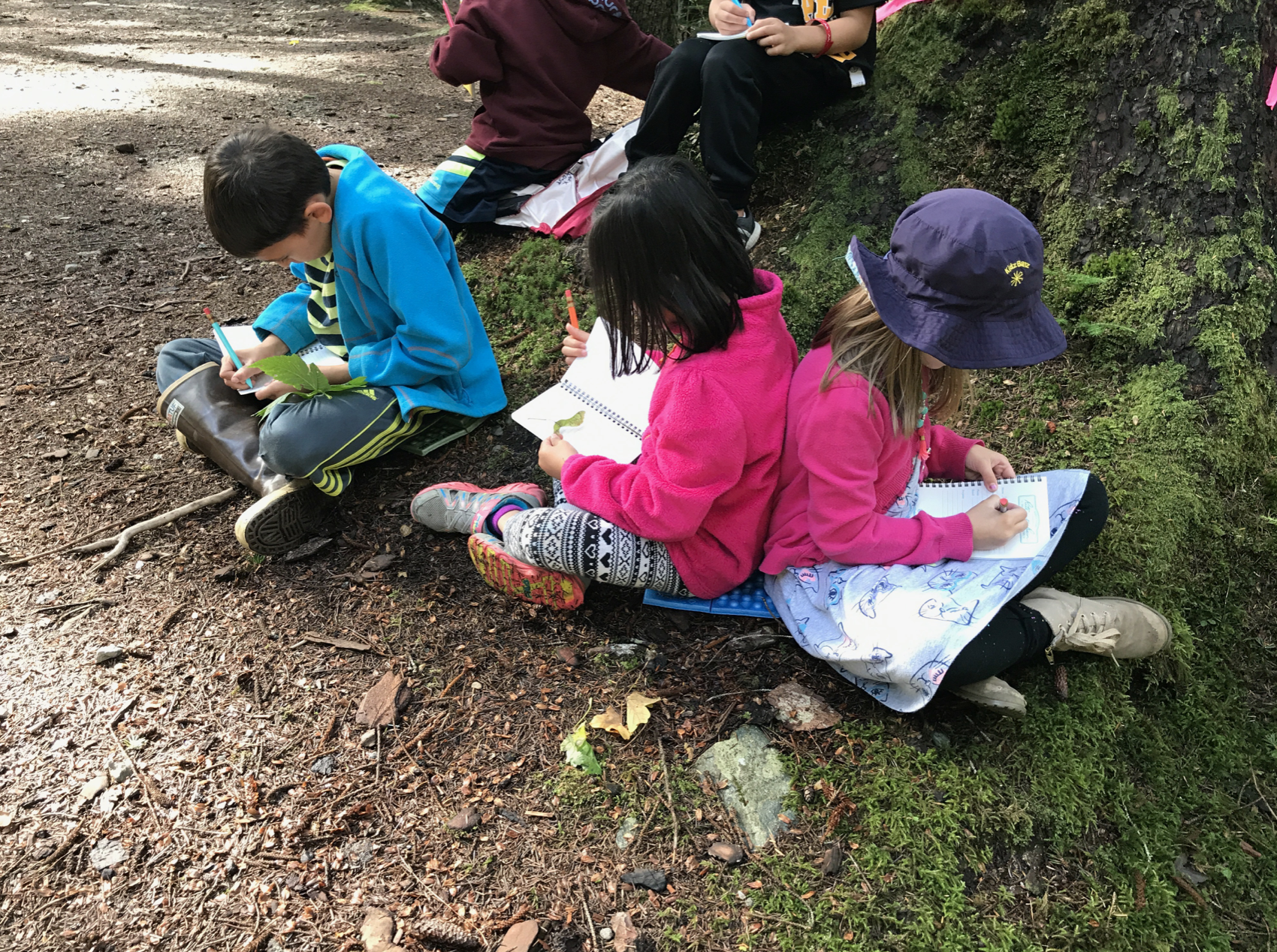Introducing the NSTA Elementary Science Position Statement
By Peggy Ashbrook
Posted on 2018-11-13
Jennifer Thompson, early elementary teacher and former chair of the NSTA Preschool and Elementary Committee, is the ideal person to introduce the updated NSTA Elementary Science Position Statement.
Welcome Jennifer!
 The National Science Teachers Association (NSTA) has recently revised and adopted a position statement in support of science for the elementary years, The Elementary Science Position Statement. The intention for this statement is to build on and connect the Early Childhood Science Position Statement (for ages 3 – 5) with a natural flow into the elementary years and then on to the Middle School Science Statement (for grades 6 – 8). In this way all children are supported to have science education from their earliest learning, into the more formal elementary years, and entering middle school with a background of experiences of being immersed in the practices of science and engineering.
The National Science Teachers Association (NSTA) has recently revised and adopted a position statement in support of science for the elementary years, The Elementary Science Position Statement. The intention for this statement is to build on and connect the Early Childhood Science Position Statement (for ages 3 – 5) with a natural flow into the elementary years and then on to the Middle School Science Statement (for grades 6 – 8). In this way all children are supported to have science education from their earliest learning, into the more formal elementary years, and entering middle school with a background of experiences of being immersed in the practices of science and engineering.
This research based document was developed over time by a committee, many whom were serving on the NSTA Pre-school Elementary Science Education Committee, a group of elementary and early childhood teachers, researchers, professors and advocates of science education. I am hugely appreciative of the Committee’s time, energy and powerful discussions from multiple perspectives that led to the final document. Research for the position statement came from the National Research Council’s Framework for K – 12 Science Education as well as other documents and peer-reviewed articles that emphasize the importance of time, preparation and thoughtful investigations as part of the daily instruction in all years of elementary school.
This position statement highlights and supports how children learn about their world through quality hands on investigations with appropriate materials. The Elementary Statement is worded to include the Early Childhood Science Position Statement’s emphasis that as young children use innate curiosity to explore their world, teachers and families in the elementary years will then continue these experiences with further development of science and engineering practices to construct understanding through real-world applications. Pre-service programs, ongoing professional development for practicing teachers, and family support programs provide yet more consistent opportunities so that all students in the elementary years experience quality science as part of their education.
This position statement calls for supports for elementary teachers to plan for science education as part of everyday instruction so that students have an authentic environment with time to use science materials, read, write and explain their thinking as they develop more scientific reasoning and communication skills. It is also a document that recommends and expects teachers and administrators to build science experiences throughout the local community so that all students engage with practicing scientists and engineers. When teachers are provided with training for the development of their own science knowledge background, students are empowered to apply the skills and strategies of scientists and engineers.
Policy makers, administrators, community members and others can also gain direction and information from this statement to guide their decisions that impact science in the elementary years. The statement holds policy and decision makers accountable through best practices of advocacy and funding so that the recommendations can be applied in support of all students and teachers.
The Elementary Position Statement emphasizes the importance of a comprehensive plan for science education from the earliest years and all throughout elementary school. From the introduction to principles, declarations to recommendations, this statement provides a far-reaching argument for science education in the elementary school years. I will be sharing this worldwide with the many teachers, pre-service candidates, administrators and policy makers that I know will appreciate it as a tool for guidance and support. I will also use it in my daily practices as a teacher so that I can inform parents, guide colleagues and build an even better environment for teaching and learning of science education in my own classroom. I encourage you to share this with your colleagues and continue to support elementary students and their families as they make connections to the world around them.
Disclaimer: The views expressed in this blog post are those of the author(s) and do not necessarily reflect the official position of the National Science Teaching Association (NSTA).



